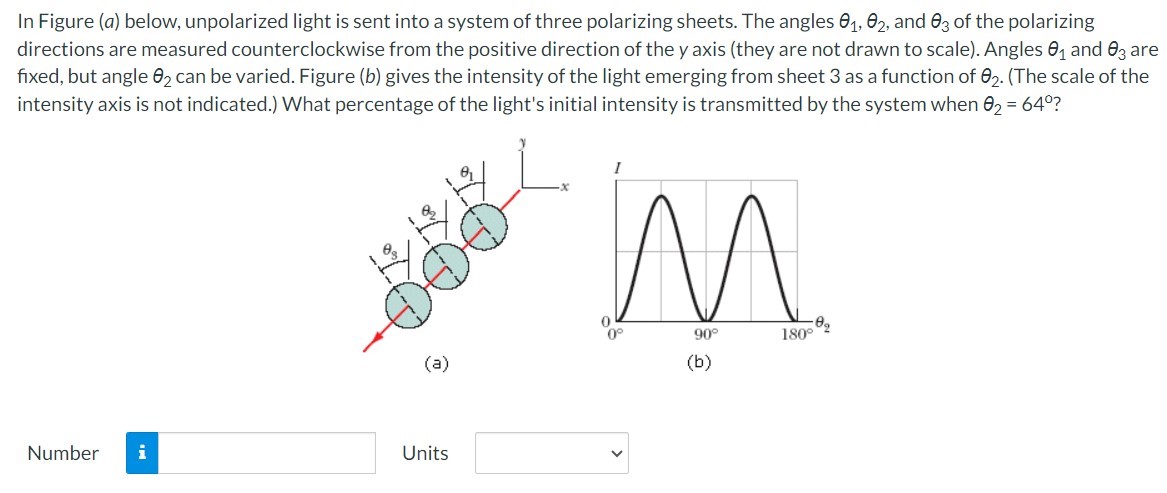In Figure (a) below, unpolarized light is sent into a system of three polarizing sheets. The angles θ1, θ2, and θ3 of the polarizing directions are measured counterclockwise from the positive direction of the y axis (they are not drawn to scale). Angles θ1 and θ3 are fixed, but angle θ2 can be varied. Figure (b) gives the intensity of the light emerging from sheet 3 as a function of θ2. (The scale of the intensity axis is not indicated. ) What percentage of the light's initial intensity is transmitted by the system when θ2 = 64∘? Number Units
